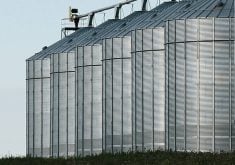WASHINGTON, Sept 12 (Reuters) – Record demand for soybeans has paled in comparison to the expected sharp gains in supply, which will leave U.S. farmers and commercial operators with a growing stockpile of the oilseed even as exports and crushings continue to rise.
The U.S. Department of Agriculture on Monday raised expected demand for U.S. soybeans during the 2016-17 crop year by 35 million bushels, of which 25 million were exports and 10 million were crushings.
But the already record production outlook was raised by a whopping 141 million bu., with increased yield forecasts from top production states Iowa and Illinois leading the charge amid near-perfect growing weather during the key development month of August.
Read Also

U.S. livestock: Cattle fall back, hogs continue slide
Chicago cattle futures fell back on Tuesday. Hogs continued to slide. Most-active December live cattle futures closed at 227.775 cents…
In the monthly update Monday, USDA forecast the 2016-17 U.S. soybean crop at a record 4.201 billion bushels, based on an average yield of 50.6 bu. per acre, a new record. That topped analysts’ forecasts that ranged from 4.019 billion bu. to 4.162 billion bu. for production and 48.1 to 50.1 bu. per acre for yield.
“We have a phenomenal demand story in the soy complex,” said Greg Grow, director of agribusiness for Archer Financial Services. “(But) with the much greater than normal August, rains, it is still probable that the final bean yields … could go up a bit more.”
Demand may have topped out, he added.
USDA’s forecast for 2016-17 soybean demand has risen by 136 million bu. since its initial assessment in May, largely due to expectations of an additional 100 million in exports. However, its outlook for U.S. production has climbed by 401 million bu. during the same period.
The market may already be factoring in a huge U.S. soybean harvest that is nearly in the bag, but the possibility of another year of shortfalls in Brazil and Argentina could keep the bears at bay, said Ted Seifried, chief ag market strategist for Zaner Group.
The strong demand pull throughout 2016 was enough to limit declines as the U.S. crop flourished during the summer, and could provide support as combines roll across the Midwest this fall.
Soybean futures fell 12.6 percent during June, July, August, outperforming corn, which plunged 22.1 percent, and wheat, which sank 16.4 percent, during the same time frame.
“Though there’s a bearish reaction to this report, I’m not so sure this is really that bearish of a report,” Seifried said, referring to the latest outlook from the USDA. “I think that soybeans new crop carry-over is not a big enough cushion for if something goes wrong with the South American growing season.”














